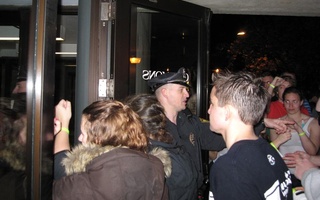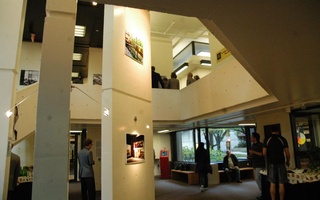Mather House Masters Sandra F. Naddaff ’75 and Leigh G. Hafrey ’73 announced Monday night that they will be stepping down at the end of the academic year after serving for 18 years, the longest tenure of any current Masters.
Several members of the Mather House community said they were surprised by the news of Naddaff and Hafrey’s departure, which came only two weeks after House Masters in Cabot and Eliot announced they would also be leaving.
Naddaff and Hafrey cited several reasons for stepping down, including Hafrey’s busy travel schedule as a senior lecturer at the MIT Sloan School of Management and the fact that their youngest son Benjamin Naddaff-Hafrey, who is also a Crimson arts editor, is now a freshman living in Matthews.
“This has been our season in Mather, and it’s time for it to end,” said Naddaff, who serves as Director of Studies in the Literature concentration and also directs the Freshman Seminar Program.
Both the outgoing and incoming House Committee co-chairs said the House Masters are a consistent presence at Mather bonding events—including the annual Mather Lather dance—and that they are an essential part of Mather’s spirit.
“They’re really universally loved by Mather House,” said incoming HoCo co-chair David L. Billing ’11.
Several HoCo members noted that the name of the Mather House Mascot, a stuffed lion named “Leighdra,” is a portmanteau of the Masters’ names.
“They’re a huge part of what makes the Mather community as strong as it is,” resident tutor Sara M. Watson ’07 said.
Hafrey and Naddaff said that while they will not be involved in the search for new House Masters, Mather’s tutors and students will have active input.
Hafrey and Naddaff met as residents of Pforzheimer House (then called North House) when Hafrey transferred from Wesleyan in 1971 as a junior.
They married in 1984 and welcomed their first son, Nathaniel Naddaff-Hafrey ’08, a former Crimson arts editor, two years later.
Hafrey and Naddaff began their tenure as Mather House Masters in 1993, before randomization.
At that time, the two said the House was initially athlete-heavy and mostly male.
“It was a very good-spirited House then,” Hafrey said.
But he added that after randomization began in 1996, the influx of jazz musicians and actors, among others, made the House feel more “complete.”
Read more in News
Bells for BeauxRecommended Articles
-
15 Faculty Hot Shots: David MalanStanding casually in the hallway of Maxwell Dworkin’s third floor, bespectacled and wearing a basic brown sweater, David J. Malan
-
Mather House Masters To Step DownMather House Masters Sandra Naddaff and Leigh Hafrey announced in an e-mail to the Mather community at 9:30 Monday night that they will step down from the House’s helm at the end of this academic year.
-
 Mather Lather Foam Sets Off Fire Alarm
Mather Lather Foam Sets Off Fire Alarm -
 Art Exhibit Reflects On Mather’s History
Art Exhibit Reflects On Mather’s History -
Thirteen New Student Organizations ApprovedThirteen new student organizations, whose missions range from fostering a vibrant social scene to facilitating emergency medical services, were approved for recognition by the Committee on Student Life.
-
Harvard Recognizes Thirteen New ClubsThirteen new student organizations, whose missions range from fostering a vibrant social scene to facilitating emergency medical services, were approved for recognition by the Committee on Student Life last Thursday.













